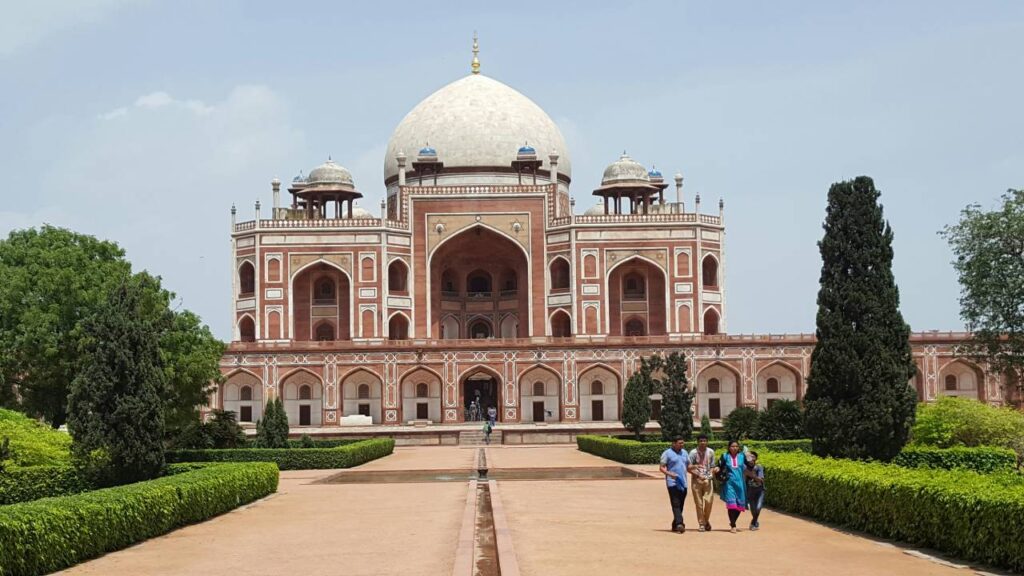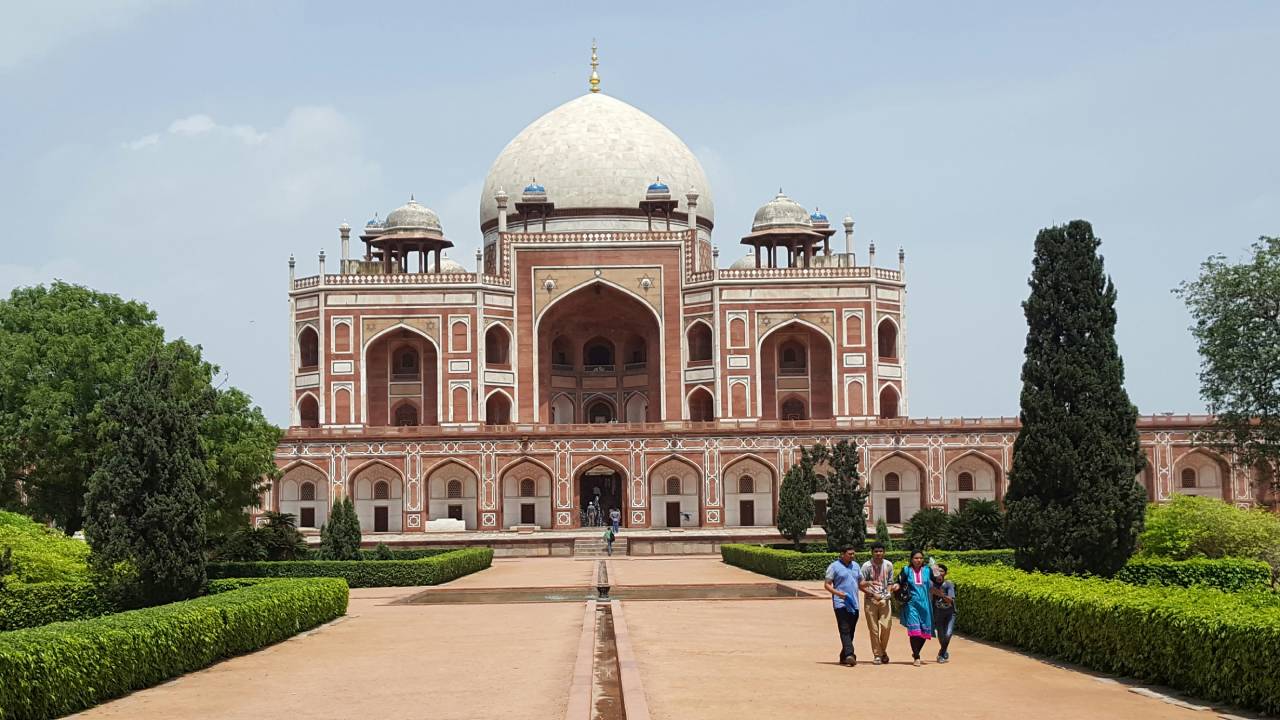Indian Capital of Delhi Breaks Heat Record. As summer engulfs the Indian subcontinent, the capital city of Delhi has once again found itself in the grip of an unprecedented heatwave. This year, Delhi shattered its previous temperature records, raising concerns about climate change, urban heat islands, and the pressing need for sustainable solutions.

On May 25, 2024, Delhi recorded a staggering temperature of 48.5°C (119.3°F), surpassing the previous high of 48.0°C set in June 2019. This extreme heat has not only set a new record but has also pushed the city’s infrastructure and residents to their limits. Roads have begun to melt, power grids are under immense strain, and the health sector is bracing for a surge in heat-related illnesses.
Delhi’s rising temperatures can be partly attributed to the urban heat island effect. This phenomenon occurs when urban areas become significantly warmer than their rural counterparts due to human activities. Factors contributing to this include extensive concrete and asphalt surfaces, high-density buildings, reduced green spaces, and vehicular emissions.
As Delhi continues to expand, the proliferation of high-rise buildings and the reduction in tree cover exacerbates the heat island effect. Consequently, the city’s ability to naturally cool down is compromised, leading to higher temperatures even during the night.
While urbanization plays a crucial role, the overarching influence of climate change cannot be ignored. Global warming, driven by greenhouse gas emissions, leads to more frequent and severe heatwaves worldwide. Delhi’s record-breaking heat is a stark reminder of the broader environmental challenges facing humanity.
India, with its diverse geography and large population, is particularly vulnerable to the impacts of climate change. Increased temperatures can lead to a host of problems, including water scarcity, agricultural stress, and health crises. For a city like Delhi, which already grapples with air pollution and water shortages, the added burden of extreme heat compounds these issues.
The sweltering heat has profound effects on the daily lives of Delhi’s residents. Schools and workplaces are forced to adjust schedules to avoid the peak afternoon heat. The demand for electricity soars as air conditioners and fans run non-stop, often leading to power outages. Outdoor workers, such as construction laborers and street vendors, face significant health risks, including heatstroke and dehydration.
Health facilities are under pressure as cases of heat exhaustion and heatstroke rise. Vulnerable populations, including the elderly, children, and those with pre-existing health conditions, are at greater risk. Authorities have issued advisories urging people to stay indoors, stay hydrated, and avoid strenuous activities during peak heat hours.
In response to the extreme heat, the Delhi government and various organizations are implementing several measures to mitigate its impact. These include setting up cooling centers, distributing water and oral rehydration solutions, and running public awareness campaigns on heat safety.
Urban planning initiatives are also gaining momentum. Efforts to increase green cover through tree planting drives, creating green roofs, and developing urban forests are being prioritized. Additionally, there is a push towards a sustainable architecture that incorporates passive cooling techniques and energy-efficient designs.
On a larger scale, combating climate change requires a concerted global effort. India is a signatory to the Paris Agreement and is committed to reducing its carbon footprint. Transitioning to renewable energy sources, enhancing public transportation, and promoting energy efficiency are critical steps in this direction.
Delhi’s record-breaking heatwave serves as a wake-up call for cities worldwide. As the impacts of climate change become more pronounced, urban centers must adapt to ensure the safety and well-being of their residents. Innovative solutions, coupled with robust policy frameworks, are essential to mitigate the effects of extreme heat.
For Delhi, the path forward involves balancing development with sustainability. Embracing green infrastructure, reducing emissions, and fostering community resilience will be key to weathering future heatwaves. As the city navigates this challenging landscape, the lessons learned here will be invaluable for other urban areas facing similar climate threats.
In the face of rising temperatures, Delhi’s resilience and adaptability will determine how well it can protect its inhabitants and thrive in an increasingly warm world.
Understanding Heat Waves: Causes, Impacts, and Adaptation Strategies
As global temperatures continue to rise, the phenomenon of heat waves has become increasingly common and severe. These extreme weather events pose significant challenges to both the environment and human society. In this blog, we will explore what heat waves are, their causes, the impacts they have on our world, and how we can adapt to and mitigate their effects.
What Are Heat Waves?
Heat waves are prolonged periods of excessively hot weather, which may be accompanied by high humidity. There is no universal definition for a heat wave, as it varies depending on the climate of a region and the threshold temperatures that are considered abnormally high. Typically, a heat wave is recognized when temperatures exceed the historical averages for a particular region by a significant margin for an extended period, usually several days or more.
Causes of Heat Waves
Several factors contribute to the formation of heat waves, including:
1. Atmospheric Pressure Systems
High-pressure systems, also known as anticyclones, play a crucial role in the development of heat waves. These systems trap warm air in a region and prevent it from dissipating. The descending air in high-pressure systems compresses and heats up, leading to persistently high temperatures.
2. Climate Change
Global warming, driven by human activities such as burning fossil fuels and deforestation, has led to an increase in the frequency and intensity of heat waves. The Intergovernmental Panel on Climate Change (IPCC) reports that heat waves have become more common and severe over the past century due to rising global temperatures.
3. Urban Heat Island Effect
Cities tend to experience higher temperatures than rural areas due to the urban heat island effect. This phenomenon occurs because concrete, asphalt, and other human-made surfaces absorb and retain heat more than natural landscapes. Consequently, urban areas can exacerbate the intensity of heat waves.
Impacts of Heat Waves
Heat waves have far-reaching impacts on various aspects of life, including:
1. Health
Prolonged exposure to extreme heat can lead to heat-related illnesses such as heat exhaustion, heatstroke, and dehydration. Vulnerable populations, including the elderly, children, and those with pre-existing health conditions, are particularly at risk. Heat waves can also exacerbate chronic respiratory and cardiovascular diseases.
2. Agriculture
High temperatures and prolonged dry periods can severely affect agriculture, leading to reduced crop yields and livestock productivity. Heat stress can damage crops, reduce soil moisture, and increase the prevalence of pests and diseases.
3. Infrastructure
Heat waves can strain infrastructure, particularly energy and water supplies. Increased demand for air conditioning can lead to power outages, while higher temperatures can warp roads, railways, and other critical infrastructure.
4. Environment
Heat waves can exacerbate environmental issues such as wildfires, droughts, and the loss of biodiversity. They can also contribute to the deterioration of air quality by increasing the concentration of pollutants and allergens.
Adaptation and Mitigation Strategies
Addressing the challenges posed by heat waves requires a combination of adaptation and mitigation strategies:
1. Urban Planning
Cities can implement green infrastructure solutions, such as planting trees, creating parks, and installing green roofs, to mitigate the urban heat island effect. Enhancing urban greenery helps lower temperatures, improve air quality, and provide shaded areas for residents.
2. Early Warning Systems
Developing and maintaining early warning systems for heat waves can help communities prepare and respond effectively. Public awareness campaigns can educate people on the risks associated with heat waves and provide guidelines on how to stay safe during extreme heat events.
3. Building Design
Promoting the use of energy-efficient building designs and materials can help reduce indoor temperatures and energy consumption. Implementing passive cooling techniques, such as improved ventilation and reflective roofing materials, can also make buildings more resilient to heat.
4. Climate Action
Reducing greenhouse gas emissions is critical to mitigating the long-term impacts of climate change and heat waves. This involves transitioning to renewable energy sources, enhancing energy efficiency, and adopting sustainable land use practices.
Conclusion
Heat waves are a stark reminder of the pressing need to address climate change and its associated impacts. By understanding the causes and consequences of heat waves and implementing effective adaptation and mitigation strategies, we can better protect our communities and the environment from the dangers of extreme heat. As we continue to navigate a warming world, proactive measures and collective action will be essential in building a resilient future.
FAQ
Q: What is a heat wave?
A: A heat wave is a prolonged period of excessively hot weather, which may be accompanied by high humidity. These conditions typically last for several days or even weeks and are often measured relative to the usual weather in the area for that time of year.
Q: What causes heat waves?
A: Heat waves are primarily caused by high-pressure systems that trap warm air in an area. These systems prevent cooler air from moving in, leading to a buildup of heat. Factors such as climate change and urban heat islands can also intensify the frequency and severity of heat waves.
Q: How can heat waves affect health?
A: Heat waves can have serious health impacts, including heat exhaustion, heat stroke, and dehydration. Vulnerable populations such as the elderly, children, and those with pre-existing health conditions are at higher risk. Prolonged exposure to high temperatures can also exacerbate respiratory and cardiovascular diseases.
Q: How can you stay safe during a heat wave?
A: To stay safe during a heat wave, stay hydrated by drinking plenty of water, avoid strenuous activities during the hottest parts of the day, stay indoors in air-conditioned spaces if possible, and wear lightweight, loose-fitting clothing. It’s also important to check on vulnerable individuals and never leave children or pets in parked cars.
Q: How can heat waves be mitigated?
A: Mitigating heat waves involves both short-term and long-term strategies. Short-term measures include increasing access to cooling centers and improving public awareness about heat safety. Long-term strategies focus on addressing climate change through reducing greenhouse gas emissions, enhancing urban planning to reduce heat islands, and increasing green spaces to cool urban areas naturally.











